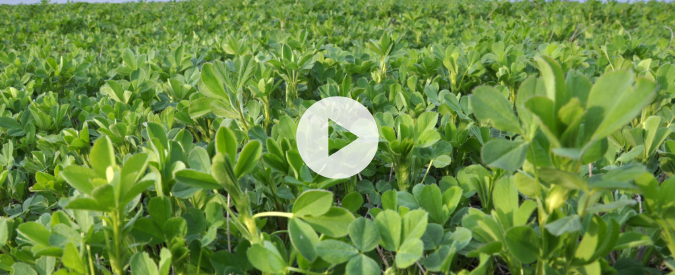From severe drought to flooded fields, Wisconsin’s forage producers are turning to forage species that can provide adaptability and flexibility in the midst of abnormal conditions. We jump in with Yoana Newman, UW-River Falls professor and Extension forage specialist, and Matt Oehmican, from Short Lane Ag Supply, to talk the details of warm season annual forages, from the decision-making process for growing these species to the unique technical agronomy management warm season annuals need to grow in Wisconsin.
The June 12 Badger Crop Connect webinar features Dr. Natasha Rayne, a new Extension faculty specialist in soil fertility. Dr. Rayne introduces us to her and her work and research in soil fertility.
The June 12 Badger Crop Connect webinar features Chris Clark, an outreach specialist in NE Wisconsin with the UW–Madison Extension Nutrient and Pest Management Program; Chris presents about pre-sidedress nitrate and plant tissue testing to help you capture a nutrient deficiency you don’t know about in your field this season.
Farming is a business that cannot avoid weather risks. A significant challenge farmers face is dealing with excessive water, especially flooded and saturated soil.
Various soil and environmental factors such as soil texture, pH, cation exchange capacity (CEC), soil moisture, relative humidity and windspeed at the time of and directly following application affect ammonia volatilization. This article reviews soil properties and environmental factors that affect ammonia loss (AL) from surface applied urea and discuss management strategies to reduce AL from applied urea-based fertilizer.
The use and adoption of technology in crop production continues to accelerate as new tools are introduced to the marketplace at relatively affordable prices. The options and applications for precision agriculture technology during the planting season are extensive. To better understand the options available and their potential benefits we must be familiar with them and how they work.
Like gas and groceries, the cost of trucking and raising dairy heifers out West has gone up. Does this present Wisconsin farmers with an opportunity to lure these animals back to the state with low-input approaches and similar performance standards with well-managed grazing?
The May 8 Badger Crop Connect session features Chris Bandura, Extension’s Conservation Cropping Outreach Specialist, speaking about nitrogen rate and timing considerations.
The April 24 Badger Crop Connect session features Dr. Brian Luck, Associate Professor & Extension Specialist for Ag Machinery and Precision Ag, UW–Madison Biological Systems Engineering Department.
The April 24 Badger Crop Connect session features Scott Newell, Extension’s Alfalfa Outreach Specialist.
A grower’s perspective. This is one of a nine-part video series on the basics of planting corn and soybean into a green living cover crop. Dan Smith, Extension Nutrient and Pest Management program manager, and Tony, a Dodge County farmer, discuss cover crop termination and early corn growth and observe soil moisture after planting.
A researcher’s perspective. This is one of a nine-part video series on the basics of planting corn and soybean into a green living cover crop. Jamie Patton, Wisconsin state soil health coordinator for USDA NRCS, discusses the soil health benefits of planting green. She focuses on how planting green helps minimize soil disturbances, maintain living […]

















